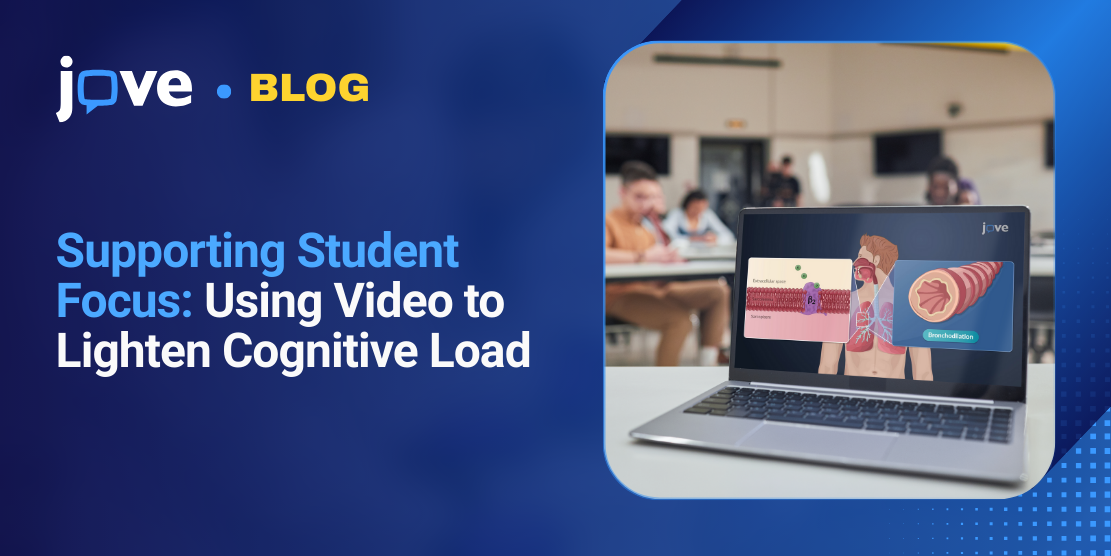In several of my undergraduate classes, I noticed the same pattern. My notes would start out neat and organized, but as the lecture gained speed, my handwriting unraveled into rushed scribbles that barely qualified as text. The pace often outstripped my ability to process information, leaving me with fragments rather than understanding.
This reflects a challenge common in STEM education: the limits of working memory, the mental system that temporarily holds and processes information. When too much material is presented at once, students may struggle to engage meaningfully, leaving them with incomplete notes rather than lasting comprehension.
Cognitive science offers useful strategies for structuring material so students can manage this load more effectively. Well-designed video is especially suited to these strategies, since it can break down complexity, combine different modes of learning, and give students space to process ideas at their own pace.
When the Mind Reaches Capacity
Working memory is like a mental notepad: it can only hold a few items at once. Dense text, rapid explanations, and abstract models quickly overload it. When the load is too heavy, learners may struggle to achieve real understanding.
This is not a matter of effort or ability—it’s how our brains work. Cognitive Load Theory shows that when too much arrives at once, there are fewer resources left to process and connect ideas. The solution is to work with these limits: break material into smaller, meaningful units and present them in a clear sequence. This frees up mental bandwidth for deeper processing and stronger retention.1,2
Cognitive Science Principles in Action
1. Visual + verbal learning
Scientific and technical ideas are often easier to learn when seen as well as heard. Dual Coding Theory shows that combining visuals with narration or text helps reduce strain on working memory and improves retention.3,4
Video also supports signaling: the use of arrows, highlights, or color changes to direct attention to key details and reduce distractions.
Protein folding is easier to understand when shown as a 3D animation with key bonds highlighted.
2. Segmenting multistep processes
Video breaks complex tasks into smaller steps. This reduces overload and directs attention to one element at a time.
A lab setup can be segmented into clips showing equipment assembly, calibration, and final safety checks before the experiment begins.
3. Scaffolding learning pathways
Students benefit when concepts build gradually. A series of short videos can start with basics and move toward more advanced applications, supporting knowledge step by step.
4. Self-pacing for cognitive control
Unlike live lectures, video allows learners to pause, rewind, or replay as needed. This flexibility supports consolidation, gives students more control over their learning, and creates opportunities for self-assessment.
Engineering students can revisit the critical step in a calculation and avoid feeling left behind in class.
5. Embedding Retrieval Practice
Short quizzes or prompts inside a video can push learners to actively recall key ideas, strengthening long-term memory and engagement.5
A physics demonstration could include a checkpoint question about forces before moving to the next concept.
Making Learning Manageable
Dense material is unavoidable in STEM, but how it is presented makes a significant difference. By breaking information into manageable units, providing scaffolds, pairing words with visuals, embedding retrieval opportunities, and giving students control over pacing, faculty can reduce mental strain and promote deeper understanding.
Well-designed video brings these principles together in one medium. It doesn’t just lighten cognitive load, it creates conditions for deeper engagement, stronger retention, and greater confidence in tackling complex scientific ideas. For faculty, video aligns teaching with how the brain actually learns.
Request a JoVE video playlist tailored to your syllabus.
- Sweller, J. (2011). Cognitive load theory. In J. P. Mestre & B. H. Ross (Eds.), The psychology of learning and motivation (Vol. 55, pp. 37–76). Academic Press. https://doi.org/10.1016/B978-0-12-387691-1.00002-8
- Paas, F., & Sweller, J. (2014). Implications of cognitive load theory for multimedia learning. In R. E. Mayer (Ed.), The Cambridge handbook of multimedia learning (2nd ed., pp. 27–42). Cambridge University Press. https://doi.org/10.1017/CBO9781139547369.004
- Paivio, A. (2006). Mind and its evolution: A dual coding theoretical approach. Lawrence Erlbaum Associates. https://doi.org/10.4324/9781410614598
- Mayer, R. E. (2009). Multimedia Learning (2nd ed.). Cambridge University Press. https://doi.org/10.1017/CBO9780511811678
- Roediger, H. L., & Butler, A. C. (2011). The critical role of retrieval practice in long-term retention. Trends in Cognitive Sciences, 15(1), 20–27. https://doi.org/10.1016/j.tics.2010.09.003





